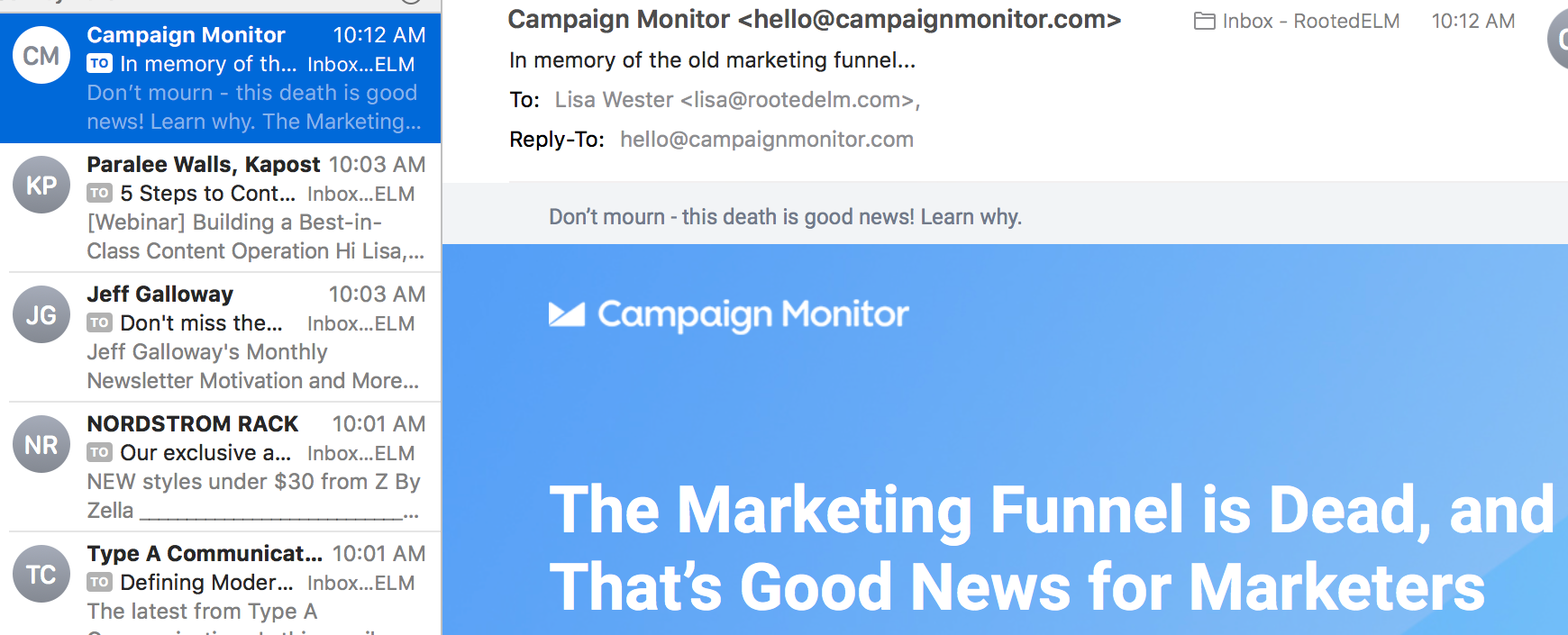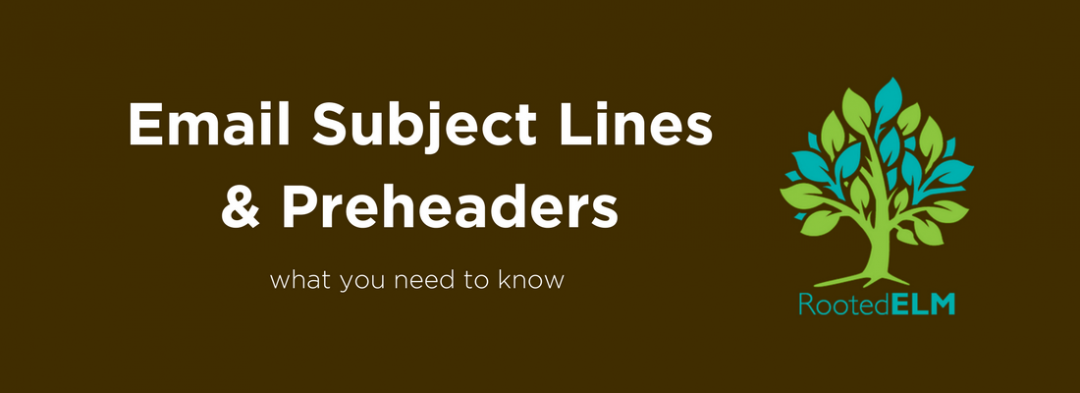Your subject line and preheader text are the first thing your audience sees and the deciding factor on whether your email is opened or deleted. So, how do you write subject lines and preheader text that make your subscriber want to open?
The Subject Line
Your subject line is the last thing you write and the first thing they see. Only once you’ve crafted your email message and identified a strong call-to-action, should you begin thinking about your subject line. Think of the subject line as a catchy headline that summarizes the main idea of your email. Start by writing down the key points from your email, and use that list to brainstorm.
When crafting subject lines be sure to:
- Include the most important information first
- Use no more than 50 characters
- Consider personalizing with a first name
- Use action words
- Test your ideas
The Preheader
Even if you’ve written the most compelling subject line in the world, you’re not finished yet. The Preheader is the text your subscribers see as a preview to opening the email. If you don’t provide an original preheader, it will default to the first line of your email—which works fine in some instances. But usually, you want to use the preheader as another opportunity to hone your message. It’s essentially an extension of the subject line. Think of it as a “to be continued” on the story you’ve just introduced, or like the book jacket description to a great novel.
When writing your preheader text, here are a few tips:
- Offer a sneak peek at how the email benefits your subscriber
- Give a short summary of the contents
- Give context
- Ensure the first 50 characters make sense as a stand-alone, in case the reader is opening in mobile
- Include a call-to-action
- Provide an incentive to open
Starting a subject line with “Seth’s Blog” or “Email Marketing Rules” indicates the email is part of a series.


The preheader text is awesome at grabbing the attention of your subscribers and is a great way of expanding on your subject line. As I’m sure you’ve noticed though, there are two types of preheaders: those that are precise and end with white space and those that end with “preview on the web” and other text from the start of an email. Obviously, the one that ends in white space is a better experience for the subscriber.
There’s an easy way to avoid unwanted text showing up in your preheaders. On your next campaign include a hidden div full of non-breaking spaces and zero-width non-joiners right after the <body> tag of your email or template.
Differentiate your subject line and preheader by adding white space, giving room to stand out in the inbox.
Be Mindful & Informed
Below is an example of the need to be sensitive and aware of your external environment before you send an email. “Because the death of the First Lady Barbara Bush occurred on the same day I received this email, I was confused and a little bit annoyed when I first read the subject line and preheader,” said Lisa Wester. “Once opened, the subject line made sense, but my first impression was not a good one!”

Resources:
8 Embarrassing Preview Text Mistakes + 4 Tips on How to Avoid Them — Litmus Blog
Outstanding Email Marketing Examples of Subject Lines — Email Marketing Rules
18 Hacks for Improving Your Email Subject Lines — Campaign Monitor





